Tuesday Triage #62
- TUESDAY TRIAGE #62 by Vadim Drobinin
- On French classics
- Things I enjoyed reading
- 1. Paradise lost: The rise and ruin of Couchsurfing.com by Andrew Fedorov
- 2. iOS and iPadOS 15: The MacStories Review by @viticci
- 3. Duolingo: The antithesis to the bazaar by @nibnalin
- 4. Death of the calorie by Peter Wilson
- 5. The housing theory of everything by Sam Bowman, John Myers, and Ben Southwood
- 6. How Inuit Parents Teach Kids To Control Their Anger by @nprjane and @foodiescience
- 7. Every engineer should do a stint in consulting by Forrest Brazeal
- 8. How I made $50K in 3 days with NFTs by @Stammy
- 9. Why women want sugar daddies by @realzoestrimpel
- 10. The Hidden Melodies of Subways Around the World by Sophie Haigney and Denise Lu
- Things I didn't know last Tuesday
- 1. Pringles are potato chips
- 2. Ruin value
- 3. Actuarial notation
- 4. Why we picture bombs as black balls with a wick
- 5. A blog can have an ISSN
- 6. Cigarette "filter"
- 7. Highways England was referred to court for a corporate manslaughter
- 8. Vampires weren't inspired by bats
- 9. Library Hand
- 10. The first webcam was invented to watch coffee
- Book of the week
- Thank you and see you in a week!
TUESDAY TRIAGE #62
by Vadim Drobinin ¶
Your weekly crème de la crème of the Internet is here!
21.09.2021 (read in browser)
-
Intro
Whatever is on my mind this week. -
Things I enjoyed reading
Ten-ish articles I found worth reading. -
Things I didn't know last Tuesday
Ten-ish facts I didn't know when I wrote the previous edition. -
Book of the week
Some thoughts on the latest book I've read.
On French classics ¶
I dug up a huge piece of beef fillet and that always means one out of two things.
Sadly it is too early for my special Beef Wellington, and I had to settle with mere steaks.
And steaks scream France to me, maybe because almost every French Michelin restaurant starts with a steak.
French dishes always start with potatoes. You might think I am wrong, but this is the hill I am willing to die on: if there are no potatoes, neither on the plate nor in the spirit of the dish, it's a weak shadow of its original glory. The recipe itself comes from Tom Kerridge's book on favourite dishes from his UK-based Michelin-starred pub, but it as French as it gets.
Look at this fancy potatoes. I didn't have an apple corer, so had to improvise with a handle from a whisk.
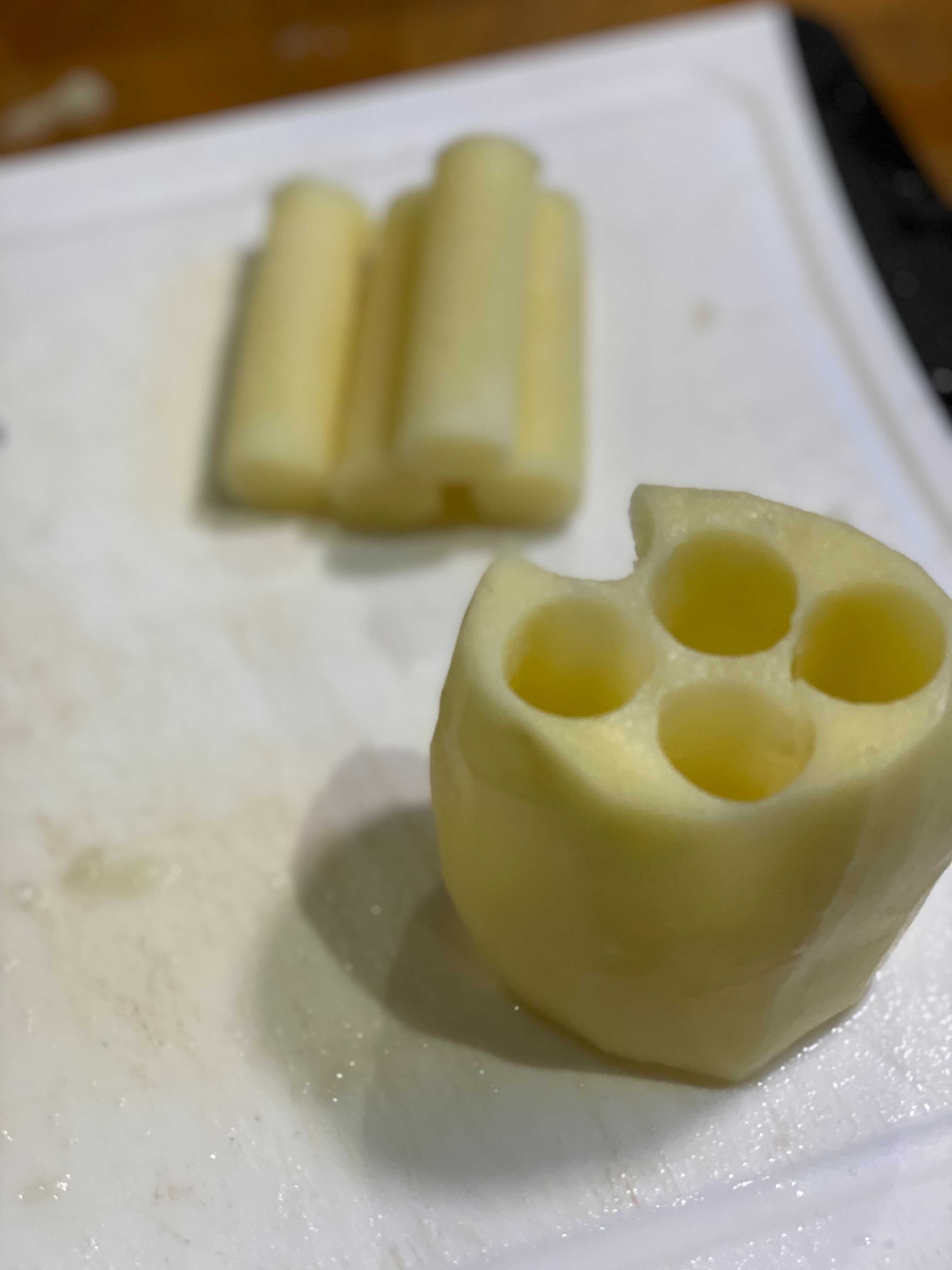
Apparently a trick to make Fillet Mignons to hold their shape is to sear them with a clear film on top. I was freaking out through the process but in fact it holds up to 200ºC+, so seems like I will be doing it again.
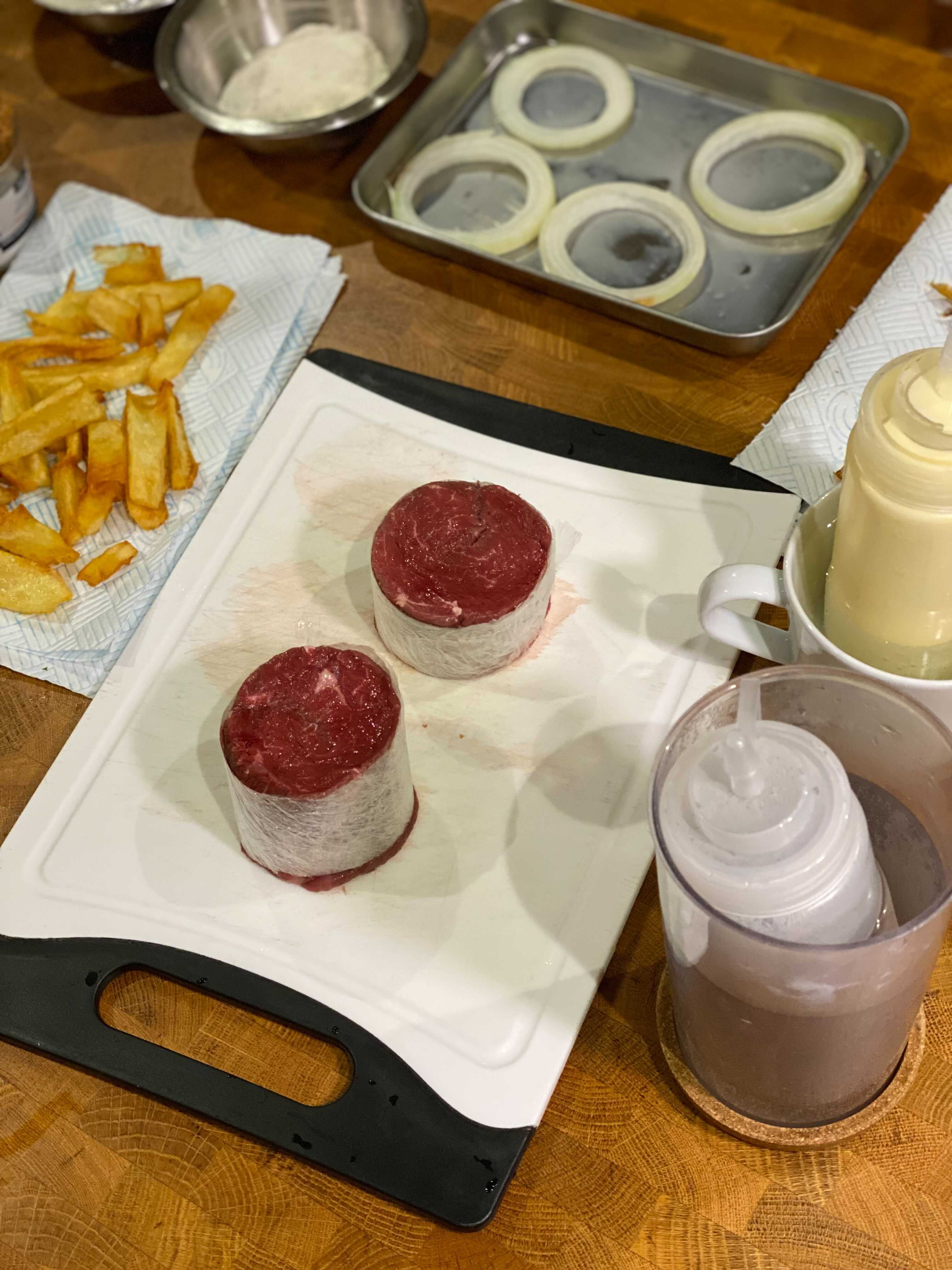
And here is the plating: triple-cooked chips, Béarnaise sauce (Sasha grew tarragon for it), medium rare Fillet Mignon, onion rings, Cafe de Paris butter, and red wine sauce (which started separating way too soon).
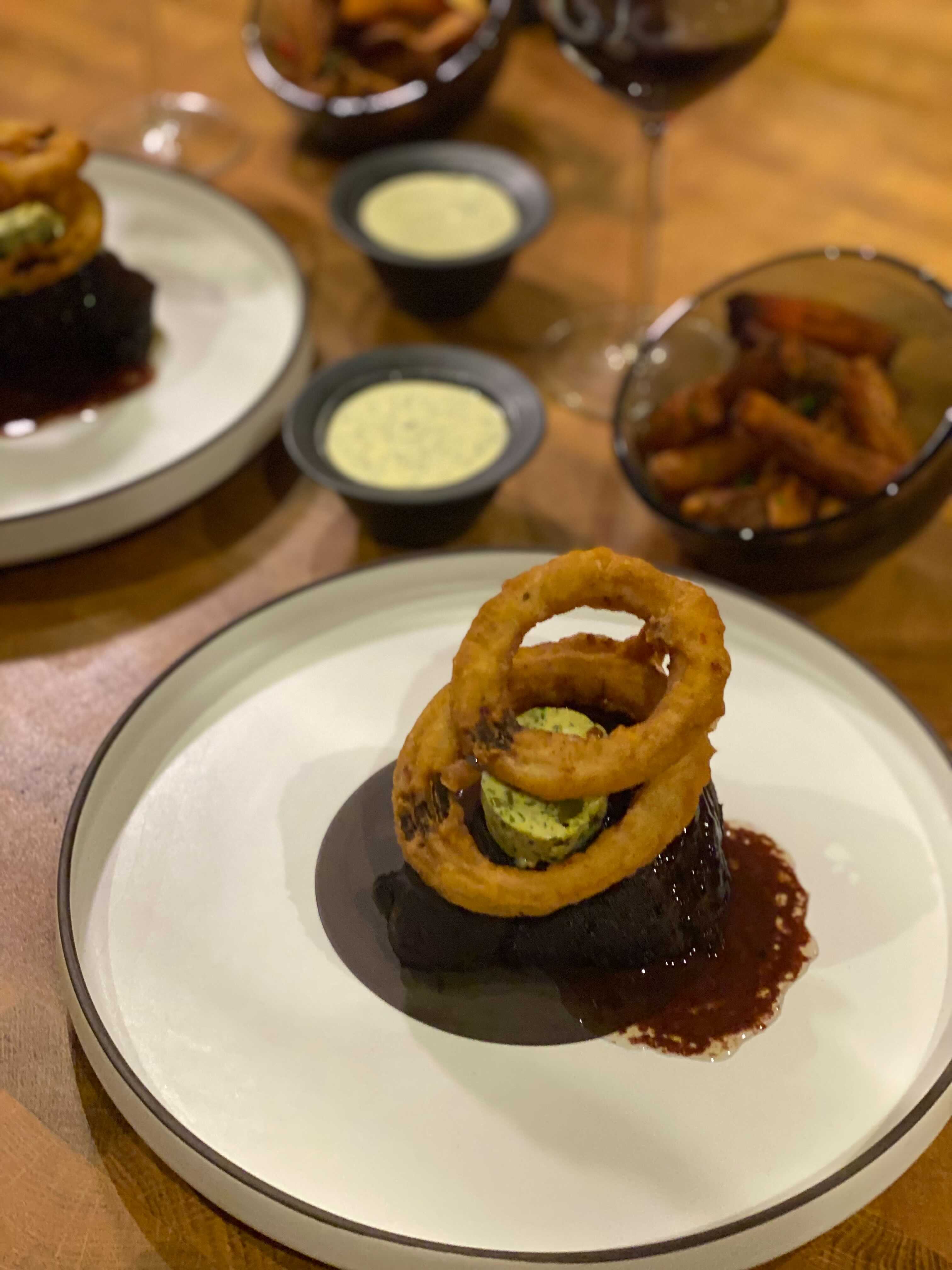
Quoting myself is an odd thing, but I posted my thoughts about the rise and fall of French cuisine more than a year ago:
The French cuisine is something we can never be grateful enough for, and yet, as the author rightfully says, this is the time to move on.
I still think so, and didn't cook much of overly buttery dishes since. This time we still had more fillet of beef left, so instead I based the dish off Dani Garcia's three Michelin star recipe from Madrid-based BiBo.
It's a heavy riff though: the sauces and meat were cooked by the book, as well as the potatoes (which in turn were the classic version of Robuchon's recipe).
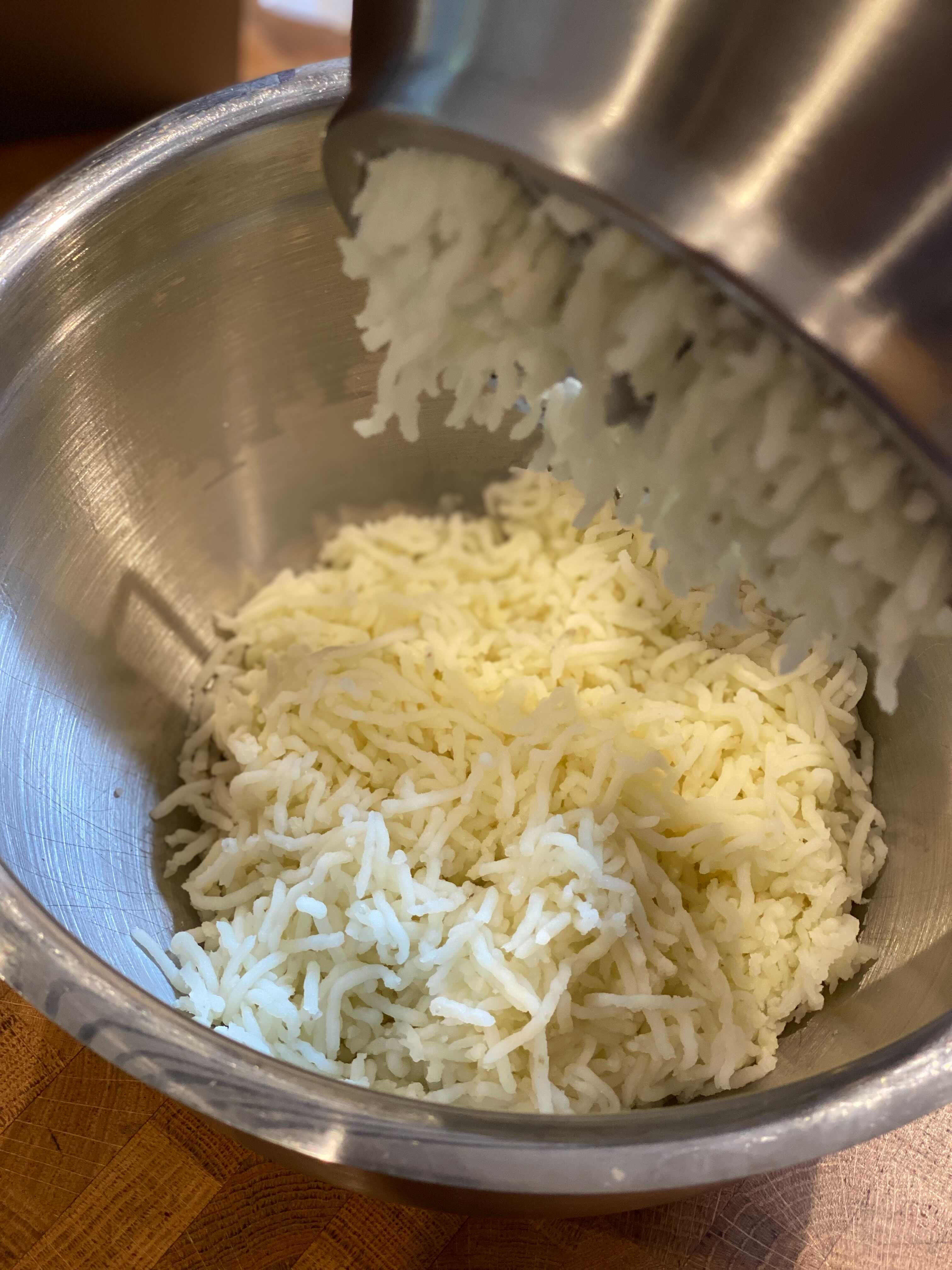
However, we thought of bringing in something iconicly British and mixed deep-frying everything with pickles.

Pickled cucumbers were odd, stuffed olives turned out to be a hit, and onions were as good as ever.

The reast was pretty much classic again, but I still feel that a deep fried olive garnish on a plate goes a long way.
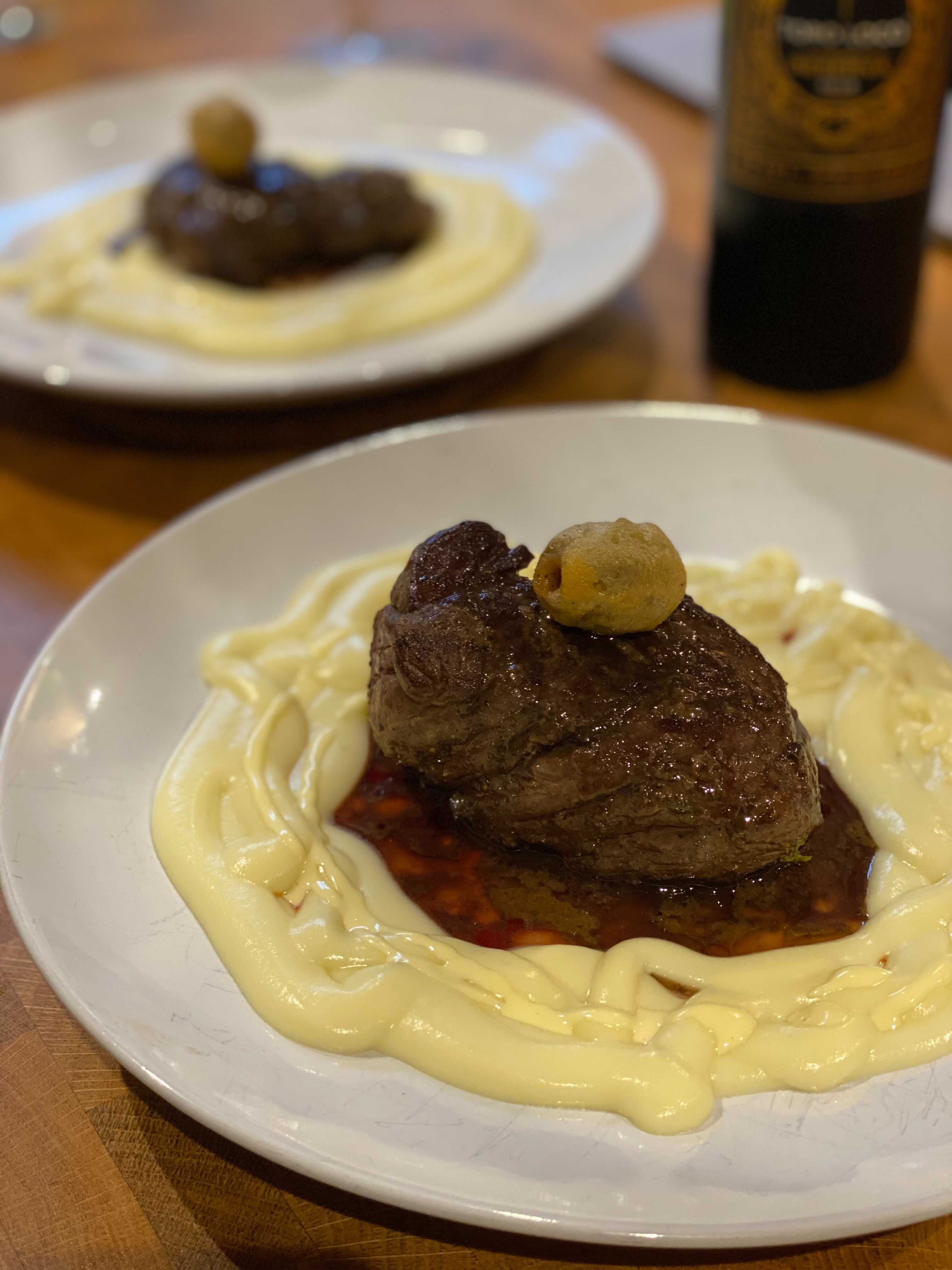
Next time I will throw it into a Martini.
Things I enjoyed reading ¶
1. Paradise lost: The rise and ruin of Couchsurfing.com by Andrew Fedorov ¶
Once I just turned eighteen, I went for my first trip to Europe. Alone, through a few foreign countries, with a mediocre level of English, I doubt I would have as much fun as I had were it not for the Couchsurfing community.
Over the course of the next few years I stayed its passionate advocate: kept traveling the world and meeting many people who I still keep in touch with. I eventually even played beer pong with some if its employees at CS's San Francisco headquarters.
The platform was a beautiful place.
When Fenton found a cheap ticket to Reykjavik, Iceland, he hustled up the emails of 1,500 University of Iceland students and messaged them all, asking if he could stay with them. He got back upwards of 100 responses and ended up gallivanting around the capital with an R&B singer and her friends. When he returned home, he started thinking about ways to replicate the experience. He started building the site and registered Couchsurfing as a nonprofit in New Hampshire.
Sadly, for more than a year it pretty much doesn't exist, and the main reason is not what you might have thought, it is greed.
2. iOS and iPadOS 15: The MacStories Review by @viticci ¶
Software updates are usually a boring affair.
Apple manages to keep their announcements fun, and folks behind this annual review keep making them more interesting. As someone who scores 15-20k characters per newsletter, I can't imagine how much effort and thinking goes into such a detailed overview: you won't get it from the Apple's website either.
But I can’t do it this year. As we’ve seen in this review, both iOS and iPadOS 15 are quality-of-life updates that bring a ton of enhancements and app-related additions, but very little in terms of bold, all-encompassing visions for what’s next. There are exceptions, arguably, such as Live Text in the Camera; after three months, however, I don’t think iOS 15 will be remembered like iOS 13 and 14 were.
Also the conclusion pretty much confirms my thoughts after the Keynote and this year's Apple Events. We got a great update for both hardware and software; there is nothing wrong with it not being as mind-blowing as you might have thought.
3. Duolingo: The antithesis to the bazaar by @nibnalin ¶
Every now and then I pick up Duolingo the app: mostly I enjoy their mechanics and smooth transitions, less so the learning process as I find it rather useless: learning words is the easiest part of any language, the grammar is harder, but being able to listen and being brave enought to speak is by far the most complicated bits.
Learning a language is an intrinsically social activity. The only way to get good at communicating in a new language is to… well, communicate with others using it. Unlike a regular classroom where you’re surrounded by other students learning the same language as yourself, you are learning “alone” on Duolingo. What seems like a strict negative for Duolingo is actually a surprising positive since it silently forces this natural growth loop: You have to use your Duolingo education with friends/family outside the app, and that’s perhaps the best kind of word-of-mouth plug any product could ever hope to generate.
The article is less about learning the language: it is about Duolingo the company, and it is unexpectedly interesting to read (I am saying that as a person who almost slept through all my marketing and economics lectures).
4. Death of the calorie by Peter Wilson ¶
Over the years I had different success with various diets, and yet there is one I never trusted: the "calories in, calories out" approach where people track every single dish they have, and then aim to maintain the amount of calories within some threshold.
I didn't buy it because I am too lazy to bother. Most of the dishes I consume don't come with calories written on a package, they are cooked to order (or delivered but customised!).
That isn’t the only problem. Calorie counts are based on how much heat a foodstuff gives off when it burns in an oven. But the human body is far more complex than an oven. When food is burned in a laboratory it surrenders its calories within seconds. By contrast, the real-life journey from dinner plate to toilet bowl takes on average about a day, but can range from eight to 80 hours depending on the person. A calorie of carbohydrate and a calorie of protein both have the same amount of stored energy, so they perform identically in an oven. But put those calories into real bodies and they behave quite differently. And we are still learning new insights: American researchers discovered last year that, for more than a century, we’ve been exaggerating by about 20% the number of calories we absorb from almonds.
Also I didn't know that numbers on packages have a ±20% error margin, which is apparently OK.
5. The housing theory of everything by Sam Bowman, John Myers, and Ben Southwood ¶
As someone who grew up thinking of owning things as a sign of being successful, owning a property is probably one of the ultimate goals: those which change the way you think of your life. Seems like there are many other things that a lack of housing affect, including obesity and birth rates:
Across the developed world, the number of children that women actually have is well below the number they say they would like to have. According to one recent study, after controlling for other factors, a 10% rise in house prices was associated with a 1.3% fall in overall births. Put together with the huge rises in housing costs we’ve seen over the past four decades, this implies a massive reduction in births across the Western world. One report estimated that rises in the cost of UK housing between 1996 and 2014 may have led to 157,000 fewer children being born in that period alone.
Surely there might be way more to statistics than a mere correlation, but it actually looks very reasonable.
6. How Inuit Parents Teach Kids To Control Their Anger by @nprjane and @foodiescience ¶
An example of storytelling powerful enough to shape one's life:
For example, how do you teach kids to stay away from the ocean, where they could easily drown? Instead of yelling, "Don't go near the water!" Jaw says Inuit parents take a pre-emptive approach and tell kids a special story about what's inside the water. "It's the sea monster," Jaw says, with a giant pouch on its back just for little kids.
A narrative is often underestimated. People tend to approach stories as a kind of entertainment, but in fact they can change the way we approach others, or even ourselves. That's why misinformation in the Internet is a big deal: one day it will be too late to fix.
7. Every engineer should do a stint in consulting by Forrest Brazeal ¶
I started programming in exchange of money way earlier than I could to work full time, and naturally gained enough experience to lead way before anyone would hire me for a leading position. So I skidaddled into consulting for a few years, working behind the shadows and patiently waiting until I look old enough to do business in person.
So I might have a weird bias here, but yes, consulting does wonders to people, and working with multiple clients simultaneously is a great way to come up with unified principles of one's identity when it comes to work.
Once you’ve worked with a few clients, you’ll realize that most of them aren’t as unique and special as they think they are. They’re facing the same organizational malaise and borrowing against the same technical debt as everybody else. You’ll quickly start to become a professional pattern-matcher, applying things that worked in company X to the problem you see in company Y. To the extent that “best practices” in tech are a real thing, this is where they come from.
The "pattern-matcher" metaphor makes lots of sense too: eventually you accept that people just want Airbnbs for cats and Ubers for books, and a few building blocks will take you a long way.
8. How I made $50K in 3 days with NFTs by @Stammy ¶
I've been ~wasting~ investing money into crypto projects for almost a decade now, and yet NFT is one of the most exciting ideas I've heard of (maybe on par with digital fashion).
If I was doing a much larger NFT project, I would probably spend a bunch of time and money developing and deploying my own smart contract on Ethereum. NFTs are minted through a smart contract, small bits of code running on the blockchain itself. Owning your own smart contract gives you complete control over your NFT collection and doesn't delegate any control over to a NFT marketplace. It just costs a lot to develop and deploy (for example, I tested deploying a simple smart contract and the estimated gas fees required to publish the smart contact to the Ethereum blockchain were around 0.25-0.35 ETH or ~$1,000).
Maybe I should start selling photos of eaten food. They are single copies by design, and yet stories trace back to the very nature.
9. Why women want sugar daddies by @realzoestrimpel ¶
An unusual result of feminism in the States (although I guess not only there) led to a raise in non-traditional sex work. That is, exchange relationships for "a taste of luxury".
Unlike traditional sex work, it’s popular among young women at elite institutions; destined for fine careers, they nonetheless see it as a time-efficient way to offload student debt and, as Molly, a 22-year sugar baby who read PPE at Oxford, told me, “get a taste of luxury”. In 2019, nearly 1000 students at Cambridge were signed up to Seeking Arrangements, the top sugar-brokering site in the Anglosphere.
The most insightful part of the article is the quotes of people they spoke to.
10. The Hidden Melodies of Subways Around the World by Sophie Haigney and Denise Lu ¶
A beautiful project and a great interactive page, where people can both read stories about subways and also listen to their sounds:
Door chimes are part of a broader soundscape that can evoke something deeply specific to place and time. One Russian train enthusiast, who also collects transit videos, said that he finds station announcements and certain chimes to be reminiscent of a romantic, inaccessible past. “Being a native Russian speaker, I understand everything in St. Petersburg’s subway announcements,” he said. “When I ride through the Old Town and hear the names of the stations located there, I imagine that I’m a hero of a Dostoyevsky novel. I imagine that I’m in the 19th century, and if I get to this or that station I will see carriages, kerosene lamps and people in black suits and hats. So certain chimes can transfer me to another world, which feels amazing.”
Frankly, I hardly remembers sounds of the Moscow subway, despite using it daily for a few years. The way they announce the stations, yes, but not the sounds of closing and opening doors and so on. I do remember Saint Petersburg better though, not because I lived there too but thanks to my childhood where taking a ride in Saint-P's Tube was one of the best adventures (it has probably the deepest stations in the world, so escalators were lots of fun).
Things I didn't know last Tuesday ¶
1. Pringles are potato chips ¶
At some point before I learnt that Pringles Salt & Vinegar is not vegan, while Pringles Smokey Bacon is vegan.
I also know that Subway bread is too sugary to be called "bread".
Well, here is another one: Pringles tried to prove that they can't be called chips. And failed.
Procter & Gamble's initial argument was that, no, Pringles were not potato chips because they didn't "contain enough potato to have the quality of 'potatoness.'" (Is that even a word?) They also argued Pringles didn't resemble the shape of a potato chip and were more along the lines of a "savory snack."
Actually they won the cour first, but a higher court overruled the decision.
2. Ruin value ¶
There is a design concept that not just aimes at making buildings beautiful but also thinks of what they become once collapsed.
Ruin value (German: Ruinenwert) is the concept that a building be designed such that if it eventually collapsed, it would leave behind aesthetically pleasing ruins that would last far longer without any maintenance at all.
Here is how the Bank of England's ruins might look like:

3. Actuarial notation ¶
The link doesn't do justice to this beauty, but it's not just the notation, it's also about creating a limited set of tables to calculate desired cashflow values without complex spreadsheets and software.
Actuarial notation is a shorthand method to allow actuaries to record mathematical formulas that deal with interest rates and life tables.
And they were created way before computers which is mesmerising.
4. Why we picture bombs as black balls with a wick ¶
I never questioned the way bombs look in cartoons, especially in Tom and Jerry, but the question would actually make sense, as that's not how the real-world bombs look like (they could look like anything).
And cartoonists have shaped that perception the whole way. It turns out that bombs and cartoons grew up together.
Cartoons have always relied on visual shorthand; the whole point of the medium is to convey as much information as possible into a small amount of space. But bombs actually did look like that for a while.
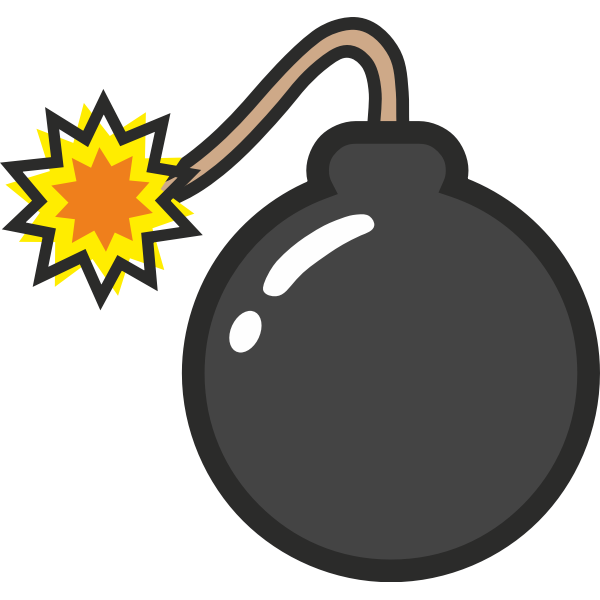
That makes sense, although I am slightly sad there is no complex story to it.
5. A blog can have an ISSN ¶
I have dealt with ISSNs before, but never thought of getting one for a blog or a website.
It turns out that lots of people cite my blog in academic papers - so I wanted to make it slightly easier for scholars of the future to use metadata to trace my vast influence on Human civilisation.
But now that actually doesn't surprise me at all: in 2021 Internet has way more power than books, so surely it deserves a way to index it too. They might have to consider adding a bit more digits to the code though.
6. Cigarette "filter" ¶
I never had illusions regarding cigarettes being bad for health, but honestly thought that filters change their colour because they accumulate something bad and prevent it from getting into lungs.
Well, they actually don't.
Only in the wake of this realisation did the agenda of cigarette designers appear to transition away from mitigating the health hazards of smoking and towards the perpetuation of the notion that cigarette filters are effective in reducing these hazards. Filters became a marketing tool, designed to keep and recruit smokers as consumers of these hazardous products.
Also while filters still remove some of the bad chemicals, they make the smoke smoother – so people smoke more and it gets worse than without filters.
7. Highways England was referred to court for a corporate manslaughter ¶
Here in the UK there are "smart" motorways with 70 m/h speed limits. They don't have breakdown lanes, so coroners have ruled that it contributed to multiple fatalities and took Highways England to court.
Following an investigation into the deaths of Jason Mercer and Alexandru Murgeanu who died on the M1, Sheffield coroner David Urpeth concluded that the removal of the hard shoulder contributed to the men’s demise. He wrote to Mr Shapps and Highways England about his concerns related to the continued rollout of the all-lane running motorways, warning how they “present an ongoing risk of deaths”.
Seems like the process didn't finish yet but I wonder if it'd change the motorways eventually.
8. Vampires weren't inspired by bats ¶
Somehow I always though that vampires made it into tales thanks to bats drinking blood, but legends about them are actually at least 400 years older than the first notes on the bats.
Vampire bats were integrated into vampire folklore after they were discovered on the South American mainland in the 16th century. There are no vampire bats in Europe, but bats and owls have long been associated with the supernatural and omens, mainly because of their nocturnal habits, and in modern English heraldic tradition, a bat means "Awareness of the powers of darkness and chaos".
Wonder if there is still a chance that the bats were known even earlier, but never got properly recorded?
9. Library Hand ¶
The story behind it pretty cool, as well as the invention by Thomas Edison;
Library hand, a rounded, easily legible style was based on Edison’s own handwriting that had allowed him to take longhand notes from the wires at a rate of 47 to 54 words per minute. He’d been fascinated with methods of writing since his early years of invention, and Edison developed one of the first methods of writing that separated each letter out individually, rather than connecting them together in script, borne from his work operating telephones and the need to capture information quickly.

I'd argue with it being readable, but then I can't really complain given the way Russian cursive looks like.
10. The first webcam was invented to watch coffee ¶
This fact pretty much sums up the Internet for me: it was invented (together with the webcam) to look after a coffee pot.
His colleague Paul Jardetzky “wrote a ‘server’ program, which ran on that machine and captured images of the pot every few seconds at various resolutions, and I wrote a ‘client’ program which everybody could run, which connected to the server and displayed an icon-sized image of the pot in the corner of the screen. The image was only updated about three times a minute, but that was fine because the pot filled rather slowly, and it was only greyscale, which was also fine, because so was the coffee.
There are some pictures behind the link and it's quite hilarious. Won't be surprised if people actually keep recording those.
Book of the week ¶
These days, if I were to pick a single most inspiring cuisine, I'd say Nordic.
This is something I rarely cook myself, mainly because a proper Nordic dish can be born only between a cold stream and a fyr forest.
A proper Nordic dish doesn't spark from a fire lighted up in a Weber BBQ, it calls for a proper wooden oven, ideally dug up in the ground just before cooking.
A proper Nordic dish won't tolerate frozen berries or dried mushrooms.
And yet, the likes of Noma, Fäviken,a and many other restaurants spent years to prove this wrong. They didn't succeed much in convencing me: despite trying out some of their recipes, I never thought of myself as someone capable of serving raindeer hearts on a moss bed.
And then I found Niklas Ekstedt's Ekstedt: The Nordic Art of Analogue Cooking:
My wife and I had recently bought a summer cottage on Ingaro, in the beautiful Stockholm archipelago, where we had created a really nice kitchen. However, since we hadn't had a chance to fix all the plumbing and rewire the old electricity, the kitchen lacked running water, and I preferred to cook out on the patio. I began to experiment with outdoor cooking and soon made a simple firepit out of an old Weber charcoal barbecue lid turned upside down, putting a castiron pan in the flames. The stronger my curiosity for openfire cooking grew, the more soiled and sootier our patio became. But I loved it.
Nonetheless, my endeavour made me wonder why Nordic kitchens hadn't stayed true to their roots and why we had abandoned our conventional cooking techniques in favour of more contemporary ways of cooking. Whilst many other cuisines around the world-the Italian and their famous Neapolitan wood-fired pizza, for example -remain faithful to their traditional cooking techniques, and instead refine and learn how to master the raw materials to attain a neo-gastronomic sophistication, Sweden, as well as the other Nordic countries, had chosen a different path. Among Swedes, our traditional cooking techniques are long forgotten, and all that remains are scanty relics displayed in open-air museums.
Niklas is famous for his cuisine too: mostly thanks to the raw ingredients and recipes built upon the part of the cuisine that mostly reminds about Norse gods, not fermented cucumbers.
I never knew about his journey though: and reading about it was probably even more exciting than manufacturing flow charts for Flambadou oysters or Saffron pancakes with birch syrup & juniper-infused vodka.
Now, in retrospective, a lot of things I had in my childhood would be considered Nordic by many but felt normal to me: from stroganina (frozen raw fish, sliced into thin strips and served with salt and pepper) to reindeer goulash with butter to pickled cloudberries.
Maybe it's not that hard to do anyway, especially given that I live on a Celtic island.
Thank you and see you in a week! ¶
If you have any questions, or want to suggest a link for the next newsletter, please drop me a message on Twitter or reply to this email.
Cheers! 🍸